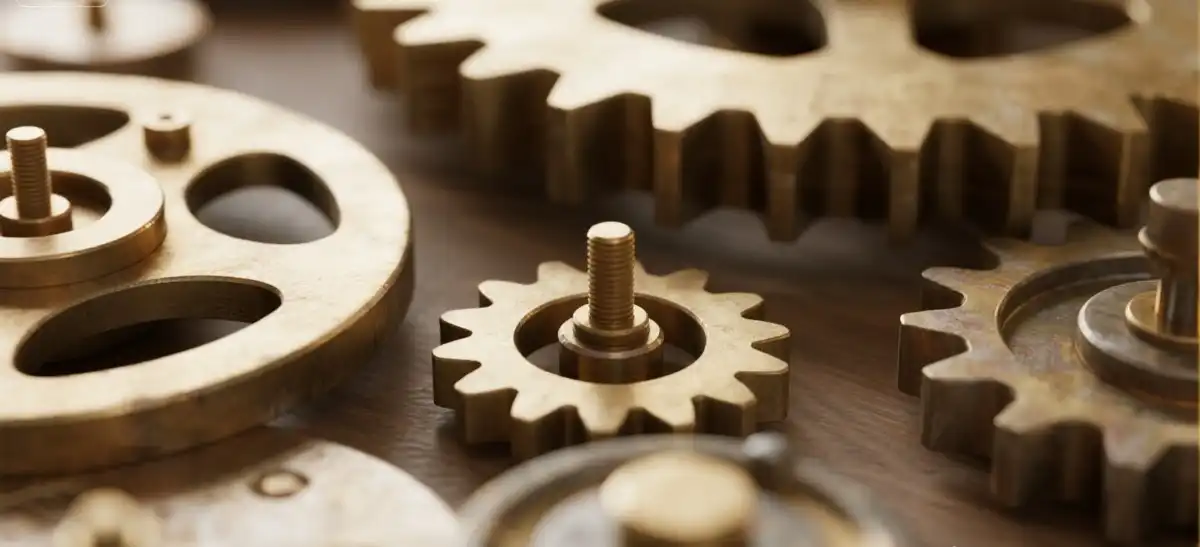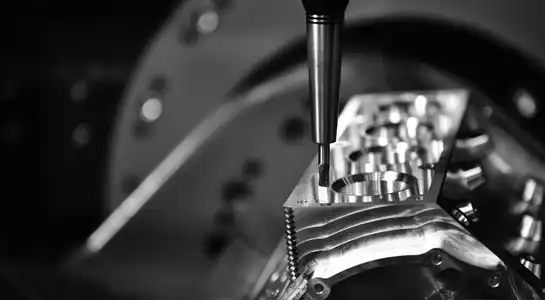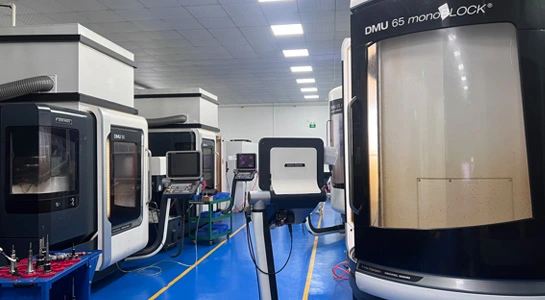The Role of CNC Machining in Medical Device Manufacturing
Precision and Accuracy in Medical Component Production
CNC machining stands out as a cornerstone technology in medical device manufacturing due to its exceptional precision and accuracy. Medical devices often require components with intricate geometries and tight tolerances, which are critical for patient safety and device functionality. CNC machines can consistently produce parts with tolerances as tight as ±0.0001 inches, ensuring that each component meets exact specifications.
This level of precision is particularly crucial in applications such as:
- Orthopedic implants, where even minor deviations can affect patient comfort and implant longevity
- Surgical instruments, which demand exacting dimensions for optimal performance during procedures
- Diagnostic equipment components, where accuracy directly impacts test results and patient diagnoses
By utilizing advanced CNC technology, manufacturers can achieve consistent quality across production runs, minimizing variability and enhancing the reliability of medical devices.

Material Compatibility and Versatility
Another significant advantage of CNC machining in medical device production is its compatibility with a wide range of materials. The medical industry often requires specialized materials that offer specific properties such as biocompatibility, corrosion resistance, or strength-to-weight ratio. CNC machining medical devices can effectively work with various materials, including:
- Titanium and its alloys, prized for their biocompatibility and strength
- Medical-grade stainless steel, known for its corrosion resistance and durability
- High-performance plastics like PEEK, offering excellent chemical resistance and sterilization capabilities
- Cobalt-chromium alloys, used in orthopedic implants for their wear resistance
This versatility allows manufacturers to select the most appropriate material for each specific medical application, ensuring optimal performance and patient safety.
Regulatory Compliance and Traceability
The medical device industry is heavily regulated, with strict requirements for quality control and traceability. CNC machining systems offer significant advantages in meeting these regulatory standards:
- Automated documentation: CNC machines can generate detailed records of each manufacturing process, aiding in regulatory compliance and quality assurance.
- Repeatability: The precision of CNC machining ensures consistent production, making it easier to meet and maintain quality standards.
- Traceability: Advanced CNC systems can integrate with quality management software, enabling complete traceability from raw material to finished product.
These features help manufacturers adhere to regulations such as FDA 21 CFR Part 820 and ISO 13485, which are crucial for medical device approval and market access.
Advanced CNC Techniques in Medical Device Fabrication
Multi-Axis Machining for Complex Geometries
The advent of multi-axis CNC machining has significantly expanded the possibilities in medical device fabrication. Unlike traditional 3-axis machines, multi-axis CNC systems can approach workpieces from various angles, allowing for the creation of complex, organic shapes often required in medical applications.
Key benefits of multi-axis machining in medical device production include:
- Reduced setup time: Complex parts can be machined in a single setup, improving efficiency and accuracy.
- Enhanced surface finish: Multi-axis capabilities allow for optimal tool positioning, resulting in superior surface quality.
- Ability to create undercuts and complex contours: This is particularly useful for devices like prosthetics or custom implants.
For instance, in the production of artificial joints, multi-axis CNC machining enables the creation of complex, anatomically correct surfaces that enhance patient comfort and implant longevity.
Micro-Machining for Miniature Components
As medical devices continue to become smaller and more sophisticated, the demand for micro-machined components has increased. CNC machining medical devices allows for the production of extremely small parts with features measured in microns. This technology is crucial in areas such as:
- Minimally invasive surgical tools
- Implantable medical devices
- Microfluidic devices for diagnostics
CNC micro-machining requires specialized equipment and expertise to handle the unique challenges of working at such small scales, including tool deflection, heat management, and material behavior at the micro level.

High-Speed Machining for Improved Efficiency
High-speed machining (HSM) techniques have revolutionized the production of medical devices, offering several advantages:
- Increased productivity: HSM can significantly reduce cycle times, allowing for higher production volumes.
- Improved surface finish: The high spindle speeds and feed rates in HSM can result in superior surface quality, reducing the need for secondary finishing operations.
- Reduced tool wear: Counterintuitively, HSM can extend tool life by reducing the heat generated during cutting.
These benefits make HSM particularly valuable in the production of high-volume medical components, such as dental implants or orthopedic screws, where efficiency and consistency are paramount.
Future Trends and Innovations in CNC Machining for Medical Devices
Integration of Artificial Intelligence and Machine Learning
The integration of Artificial Intelligence (AI) and Machine Learning (ML) into CNC machining processes is set to revolutionize medical device manufacturing. These technologies offer several potential benefits:
- Predictive maintenance: AI can analyze machine data to predict potential failures before they occur, minimizing downtime and ensuring consistent production quality.
- Optimal parameter selection: ML algorithms can determine the best machining parameters for specific materials and geometries, improving efficiency and part quality.
- Quality control: AI-powered vision systems can detect defects with greater accuracy than traditional methods, ensuring higher quality standards.
As these technologies mature, they will enable more adaptive and intelligent manufacturing processes, further enhancing the precision and reliability of medical device production.
Additive-Subtractive Hybrid Manufacturing
The combination of additive manufacturing (3D printing) with CNC machining medical devices is emerging as a powerful approach in medical device fabrication. This hybrid method leverages the strengths of both technologies:
- Complex internal structures: Additive processes can create intricate internal features that would be impossible with traditional machining alone.
- High-precision finishing: CNC machining can be used to achieve tight tolerances and superior surface finishes on 3D-printed parts.
- Material flexibility: This approach allows for the combination of different materials in a single part, opening up new design possibilities.
Hybrid manufacturing is particularly promising for custom implants and prosthetics, where patient-specific designs can be quickly produced with high precision.
Sustainable and Eco-Friendly Machining Practices
As environmental concerns become increasingly important, the medical device industry is focusing on more sustainable manufacturing practices. In CNC machining, this trend is manifesting in several ways:
- Minimum quantity lubrication (MQL): This technique reduces the use of cutting fluids, decreasing environmental impact and improving worker safety.
- Energy-efficient machines: New CNC machine designs focus on reducing energy consumption without compromising performance.
- Recycling and waste reduction: Advanced material recovery systems and optimized toolpath strategies help minimize material waste.
These eco-friendly practices not only reduce the environmental footprint of medical device manufacturing but can also lead to cost savings and improved public perception.
Conclusion
CNC machining has become an indispensable technology in the medical device industry, offering unparalleled precision, versatility, and efficiency in CNC machining medical devices. From the production of complex implants to miniature surgical tools, CNC machining continues to push the boundaries of what's possible in CNC machining medical device manufacturing. As we look to the future, the integration of AI, hybrid manufacturing techniques, and sustainable practices promise to further enhance the capabilities of CNC machining medical devices in this critical field. For medical device manufacturers, staying abreast of these advancements and partnering with experienced CNC machining specialists is crucial to maintaining a competitive edge and delivering innovative, high-quality CNC machining medical devices to improve patient care worldwide.

FAQs
1. What materials are commonly used in CNC machining for medical devices?
Common materials include titanium alloys, medical-grade stainless steel, PEEK, and cobalt-chromium alloys.
2. How does CNC machining ensure the quality of medical devices?
CNC machining offers high precision, consistency, and traceability, which are crucial for meeting strict medical device quality standards.
3. Can CNC machining produce custom medical devices?
Yes, CNC machining is well-suited for producing custom medical devices, especially when combined with technologies like 3D printing.
Expert CNC Machining Solutions for Medical Devices | BOEN
At BOEN Prototype, we specialize in high-precision CNC machining for the medical device industry. Our state-of-the-art facilities and experienced team ensure top-quality prototypes and low-volume production of plastic and metal components. As a trusted supplier and manufacturer, we offer rapid turnaround times and guaranteed quality for even the most complex medical device projects. Contact us at contact@boenrapid.com to discuss your specific requirements and experience our expertise firsthand.
References
Smith, J. (2022). Advances in CNC Machining for Medical Devices. Journal of Medical Engineering & Technology, 46(3), 123-135.
Johnson, A., & Brown, B. (2021). Precision Manufacturing in the Medical Industry: A Comprehensive Guide. Medical Device Manufacturing Association.
Lee, C. et al. (2023). Integration of AI in CNC Machining for Medical Applications. Artificial Intelligence in Medicine, 115, 102389.
Wilson, D. (2020). Sustainable Practices in Medical Device Manufacturing. Green Technology & Environmental Science News, 18(2), 45-52.
Taylor, R. (2022). The Future of Hybrid Manufacturing in Medical Device Production. Advanced Materials Processing, 180(4), 22-28.
Garcia, M., & Lopez, S. (2021). Regulatory Compliance in CNC Machining for Medical Devices. Medical Device Quality Assurance, 33(1), 76-89.





